| VOL | Title |
|---|---|
| 2025 vol.10 | FY2025 Training course for human iPS cells |
| 2024 vol.09 | We are looking for the requests from users of human iPS cells. |
| 2024 vol.08 | Attention to commonly used cell lines |
| 2024 vol.07 | FY2024 Training course for human iPS cells |
| 2024 vol.06 | We are looking for the following requests from users of human iPS cells |
| 2023 vol.05 | Information of genetic analyses regarding disease-specific iPS cells |
| 2023 vol.04 | FY2023 Training course for human iPS cells |
| 2022 vol.03 | Reporter knock-in iPS cell lines |
| 2022 vol.02 | Human iPS cells derived from patients and healthy individuals |
| 2022 vol.01 | Cell line resources for COVID-19 related research |
FY2025 Training course for human iPS cells
The training course for human iPS cells will be held. In this course, we will offer a lecture and practical training for human iPS cells including the overview of human iPS cell culture methods with passaging, freezing and resuscitation on feeder cells (vitrification method) as well as feeder-free culture methods in 1 day course.
Please refer to our webpage for more information.
https://web.brc.riken.jp/en/training

We are looking for the requests from users of human iPS cells.
- Generation of a cell line in which a specific gene deletion (knockout) or a specific gene mutation is introduced in the iPS cells derived from healthy individuals etc.
- Repair of a causal gene mutation in certain disease-specific iPS cell line.
- Adding whole genome information to the cell lines of the disease of your interest.

Healthy donor-derived iPS cells (Left: On-feeder Right: Feeder-free)

Attention to commonly used cell lines
Variable characteristics in human K-562 leukemia cell lines have often been overlooked. Commonly used cell lines may exhibit differences in their characteristics, even when they share the same name. Cell lines obtained from public cell banks can help ensure reproducibility, and publications should include both the registration number and the cell name.
Kasai F, Mizukoshi K, Nakamura Y.
Variable characteristics overlooked in human K-562 leukemia cell lines with a common signature Sci Rep 2024 14(1):9619
PubMed ID: 38671192 DOI: 10.1038/s41598-024-60271-8

We are looking for the following requests from users of human iPS cells
- Analysis of differentiation of certain iPS cell lines with micropatterning method
- Generation of a plasmid construct to express some marker gene (such as GFP) under the promoter of a specific gene
- Generation of a cell line in which a specific gene deletion (knockout) or a specific gene mutation is introduced in the iPS cells derived from healthy individuals etc.
- Repair of a causal gene mutation in certain disease-specific iPS cell line
- Adding whole genome information to the cell lines of the disease of your interest
- Analysis of whole genome regarding a certain group of disease-specific iPS cell lines
Please contact us by E-mail (cellips.brc![]() riken.jp).
riken.jp).
Information of genetic analyses regarding disease-specific iPS cells
In relation to the disease-specific iPS cells derived from Amyotrophic Lateral Sclerosis (ALS), we analyzed two causal genes, SOD1 and TARDBP/ALS10/TDP-43. In relation to the iPS cells derived from Spinocerebellar degeneration, we analyzed the number of repeated sequences in 8 gene regions. The above results are available on the following pages.
Genetic analysis of disease-specific iPS cells : Amyotrophic Lateral Sclerosis (ALS)

Genetic analysis of disease-specific iPS cells : Spinocerebellar degeneration patients

Reporter knock-in iPS cell lines
Reporter knock-in iPS cell lines made with CRISPR-Cas9 system are deposited to our cell bank.
By using these cell lines, it is possible to visualize differentiation state of cells and analyze mechanisms of development.
H2B series resources are also useful for cell cycle research.
- SOX10-TEZ(HPS5064) [Parent: 201B7(HPS0063)] *TEZ: tdTomato, EF1, Zeocin
- PAX6-TEZ (HPS4903) [Parent: 454E2(HPS0077)]
- ISL1-TEZ_1(HPS5037) [Parent: 1383D6(HPS1006)]
- H2B-TEZ(HPS5140) [Parent: 1383D6(HPS1006)]
- H2B-GEZ(HPS5141) [Parent: 1383D6(HPS1006)] *GEZ: EGFP, EF1, Zeocin
<H2B-GFP>
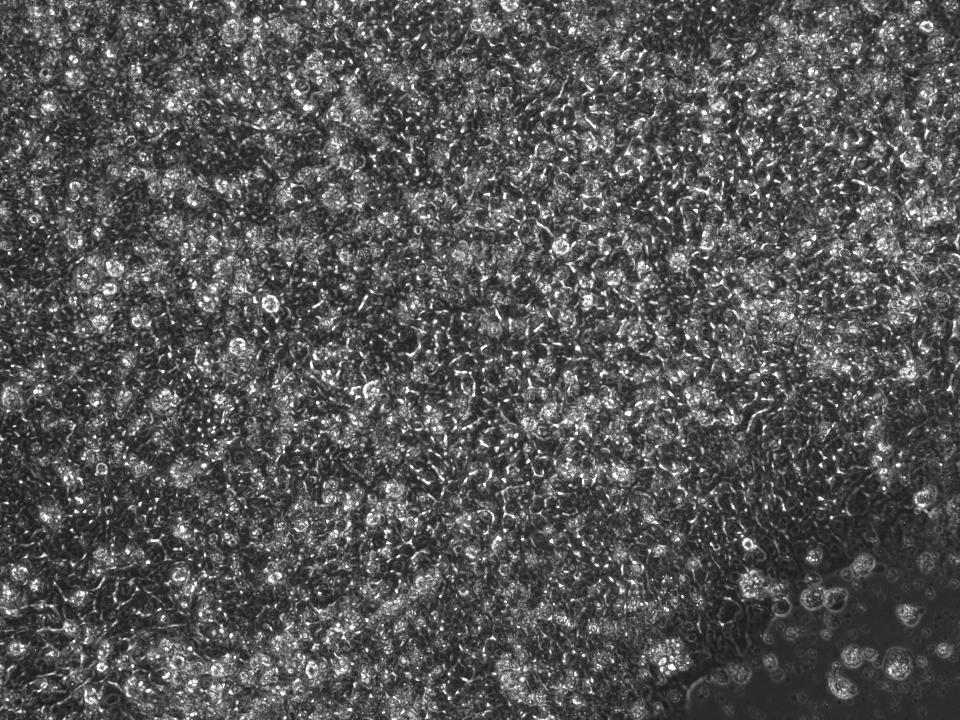
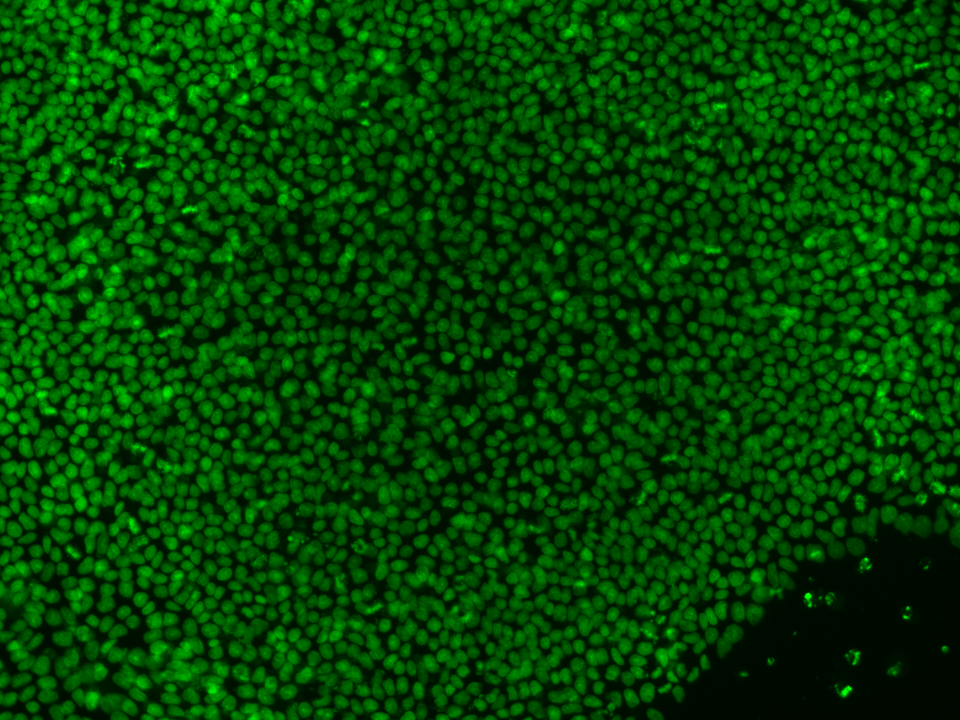
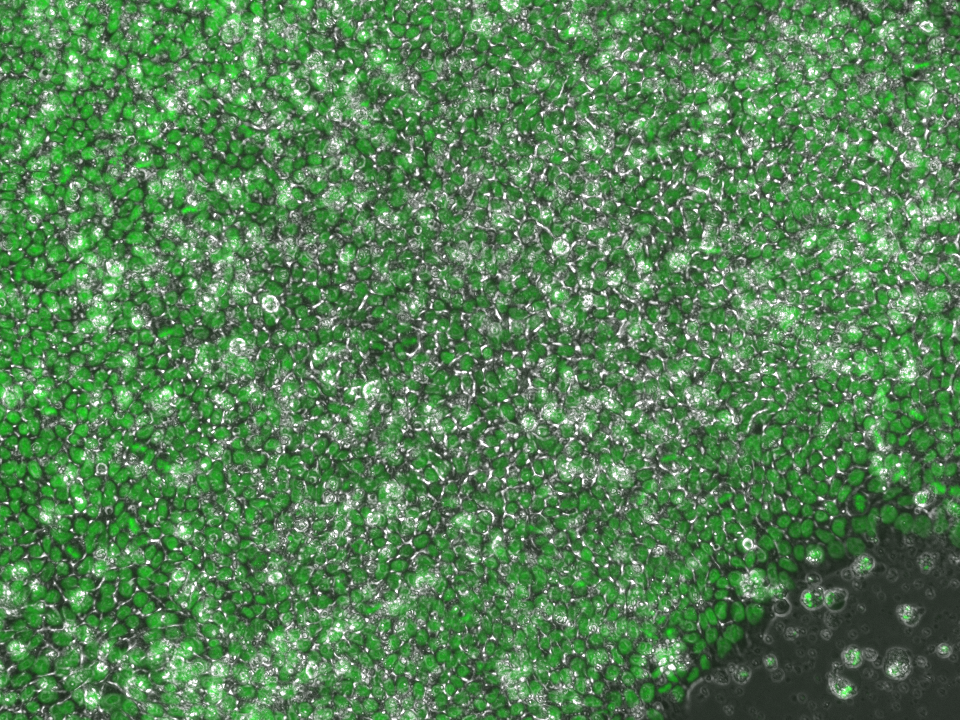
<H2B-tdTomato>

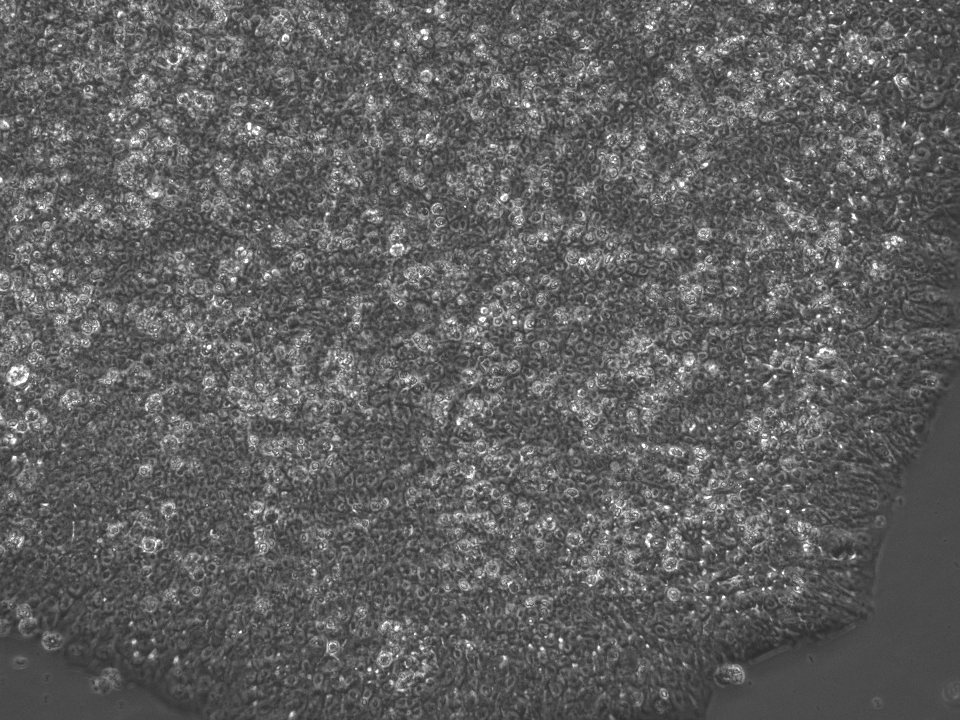

Human iPS cells derived from patients and healthy individuals
- For providing most of the cell lines neither approval of the depositor nor research collaboration is required.
- We provide these iPS cells not only to the users in Japan, but also to the users in overseas, in addition, not only to not-for-profit intuitions but also to for-profit institutions.
- The iPS cells will be cultured on a priority basis upon requests.

Human iPS cells with feeder cells

Feeder-free human iPS cells
Cell line resources for COVID-19 related research
We are providing hybridoma cell lines producing anti-SARS-CoV-2 Spike antibody.
Many papers have been published regarding COVID-19 related research in which the cell lines we had provided were used.
In addition, many different kinds of cell lines in our bank have been used for viral infection research.

R52_Spike(RCB5391)
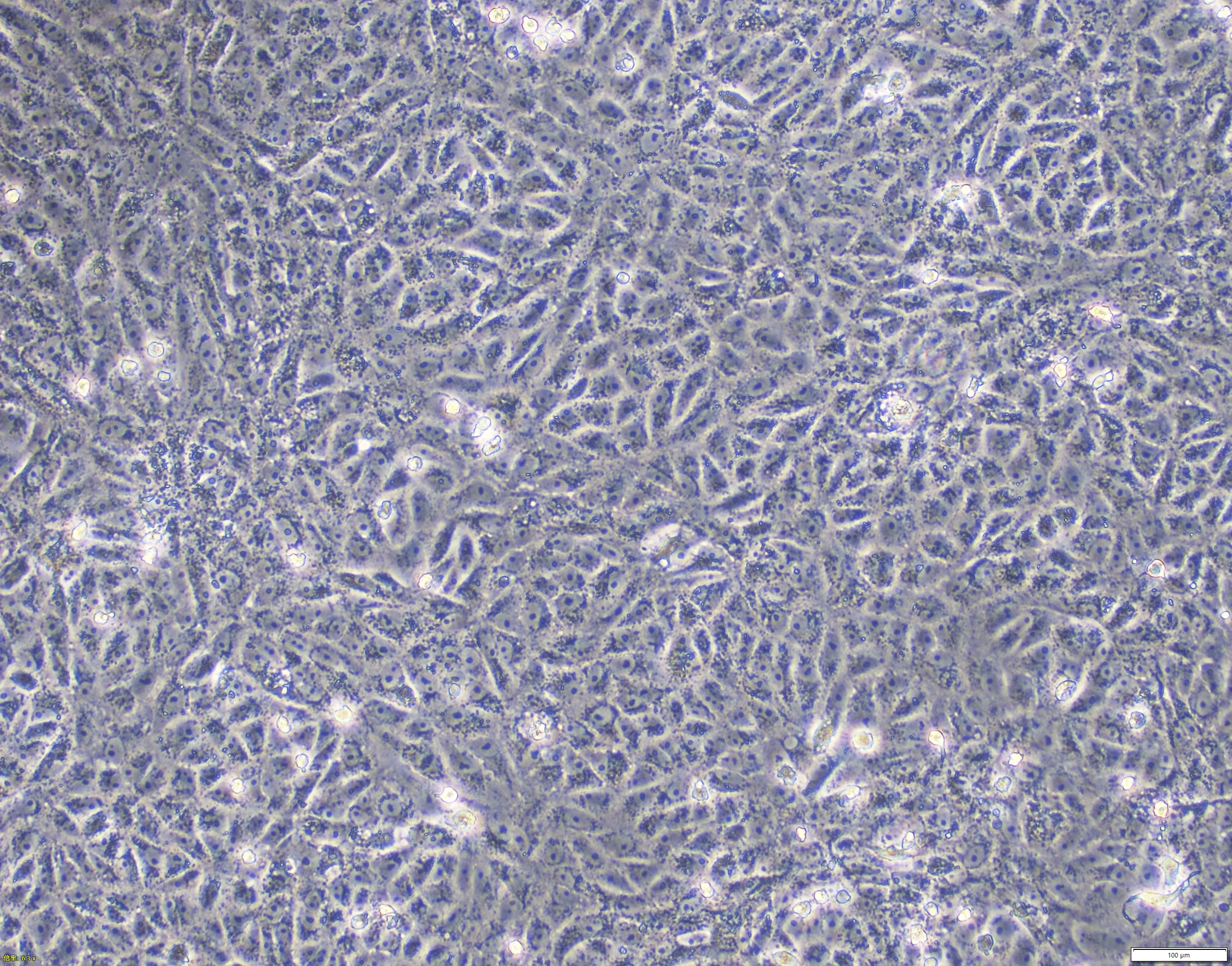
Vero(RCB0001)





